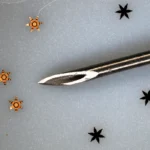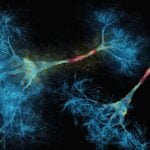Revolutionary Imaging Method Goes Beyond Skin Deep

Denis Wirtz
Skin is the body’s most visible organ. But have we ever really seen it?
“No one has viewed the skin in three dimensions at single-cell resolution,” said Denis Wirtz, professor in the Department of Chemical and Biomolecular Engineering, core researcher at the Institute for Nanobiotechnology (INBT), and vice provost for research. “CODA is going to change that.”
Developed by Wirtz’s lab, CODA is a technology that could revolutionize how the entire human body is medically visualized. The method aims to provide researchers and clinicians with the ability to visualize an entire organ at extremely high resolution—things that are mutually exclusive in current pathology.
The team has used CODA to scan and map several parts of the body, including the pancreas and the fallopian tubes, as well as tumors. Now Wirtz has collaborated with Sashank Reddy, associate professor of plastic and reconstructive surgery at the Johns Hopkins University School of Medicine and core researcher at INBT, and Ashley Kiemen, assistant professor of pathology at the Johns Hopkins School of Medicine and INBT associate reseearcher, to focus CODA’s gaze on the largest organ of all: the skin.

Sashank Reddy
Supported by a Human BioMolecular Atlas Program (HuBMAP) U54 grant from the National Institutes of Health, Wirtz’s team is not only mapping human skin, but also learning its secrets. Using the machine learning algorithm called VAMPIRE, the team visually reconstructed skin’s cell shapes, allowing the researchers to read them like a molecular atlas. With CODA’s three-dimensional capability, the atlas becomes a globe.
“The way we get these images is the way it’s done every day by pathologists all over the world,” Wirtz said. “One of the beauties—the secret sauce—is not in the images themselves, it’s how we assemble them into a 3D map that is special.”
The researchers found that the skin of people of similar age but of different races and sexes had significant variations in roughness, fat content, hair follicle aspect ratio, thickness, and the size of hair follicles and nerves. The team has also further delineated the differences between types of skin on the human body. The skin on the scalp has hair follicles and a thin epidermis, for instance, while the skin on the palm is thicker and lacks hair.
“We’re looking at skin as a function of age, how it changes in men and women, and how different components change in content, the architecture, the cellular composition,” Wirtz said. “We’ve discovered all kinds of changes to the skin that were not known.”

Ashley Kiemen
Current methods for full visualization of an organ—such as MRI, PET scans, and CT scans—compromise on resolution, Wirtz said, and much smaller sections of an organ can be viewed at higher resolution at the expense of a broader view.
Wirtz acknowledged that though this technology may sound futuristic, pathologists—often on the cutting edge of medical technology—are hard to impress.
“To teach something new to pathologists at Johns Hopkins you have to wake up early in the morning,” Wirtz says. “They’ve seen it all, but always in 2D.”
Contributors to the project from Johns Hopkins University include Alicia M. Braxton, Ashleigh Crawford, Laura Wood, and Pei-Hsun Wu.
Story by Jonathan Deutschman from the Department of Chemical and Biomedical Engineering
Latest Posts
-
 Johns Hopkins Postdoc Named in Forbes `30 Under 30′ List
December 8, 2025
Johns Hopkins Postdoc Named in Forbes `30 Under 30′ List
December 8, 2025
-
 Micro Grippers: David Gracias Builds Micromachines That Fold, Stick, Swim, and Sense—All Inside the Human Body.
November 20, 2025
Micro Grippers: David Gracias Builds Micromachines That Fold, Stick, Swim, and Sense—All Inside the Human Body.
November 20, 2025
-
 A bold new approach to autoimmune diseases
November 19, 2025
A bold new approach to autoimmune diseases
November 19, 2025


